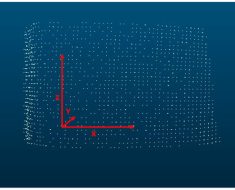January 18, 2024
2 min read
Key takeaways:
- A machine learning model was effective at predicting osteoporosis among patients with RA.
- The model highlighted monthly income, education, surgical history and marital status as predictive factors.
Machine learning algorithms can be effective in predicting osteoporosis among patients with rheumatoid arthritis, as well as identifying new predictive factors, according to data published in Nature Scientific Reports.
“Recently, machine learning (ML) algorithms have been extensively applied to various clinical practices, including disease classification, risk prediction, and treatment response,” Chaewon Lee, of Kangwon National University, in Chuncheon, South Korea, and colleagues wrote. “Although studies on the prediction of osteoporosis or fractures using ML models in the general population have been conducted, those on patients with RA are lacking.”

Machine learning algorithms can be effective in predicting osteoporosis among patients with RA, according to data. Image: Adobe Stock
To develop a machine learning model to predict osteoporosis in patients with RA using clinical data, Lee and colleagues evaluated four representative algorithms — logistic regression, random forest, XGBoost and LightGBM — each with different trade-offs of speed, resource-intensiveness and overfitting. Model underwent fivefold cross-validation measuring accuracy, F1 score and area under the receiver operating characteristic (AUC) curve.
The F1 score was “the harmonic mean of precision and recall,” while the AUC measure “was primarily used to compensate for the limitations of the accuracy when class distributions were different,” the researchers wrote. Data for 2,374 adult patients with RA, recruited between July 2009 and March 2012, were included from the Korean Observational Study Network for Arthritis.
According to the researchers, the osteoporosis predictive accuracy among the four algorithms ranged from .0678 to 0.682, and was highest for the XGBoost algorithm. Meanwhile, the random forest algorithm had the highest F1 score: 0.705. AUC measures were 0.75 (95% CI; 0.717-0.783) in the logistic regression algorithm, 0.747 (95% CI; 0.715-0.781) for random forest, 0.749 (95% CI; 0.72-0.779) for XGBoost, and 0.744 (95% CI; 0.715-0.772) for LightGBM.
The logistic regression model was shown to have the “best” performance, while the predictive capabilities of the other models were “similar,” the researchers wrote. Results from the machine learning model indicated predictive factors for osteoporosis include monthly income, education, surgical history and marital status, in addition to conventional factors like age and BMI.
“We applied representative ML algorithms to predict osteoporosis using clinical data from patients with RA,” Lee and colleagues wrote. “By comparing with previous studies, we observed a comparable performance. ML methods have the potential to support practitioners in the detection of osteoporosis in patients with RA.”



